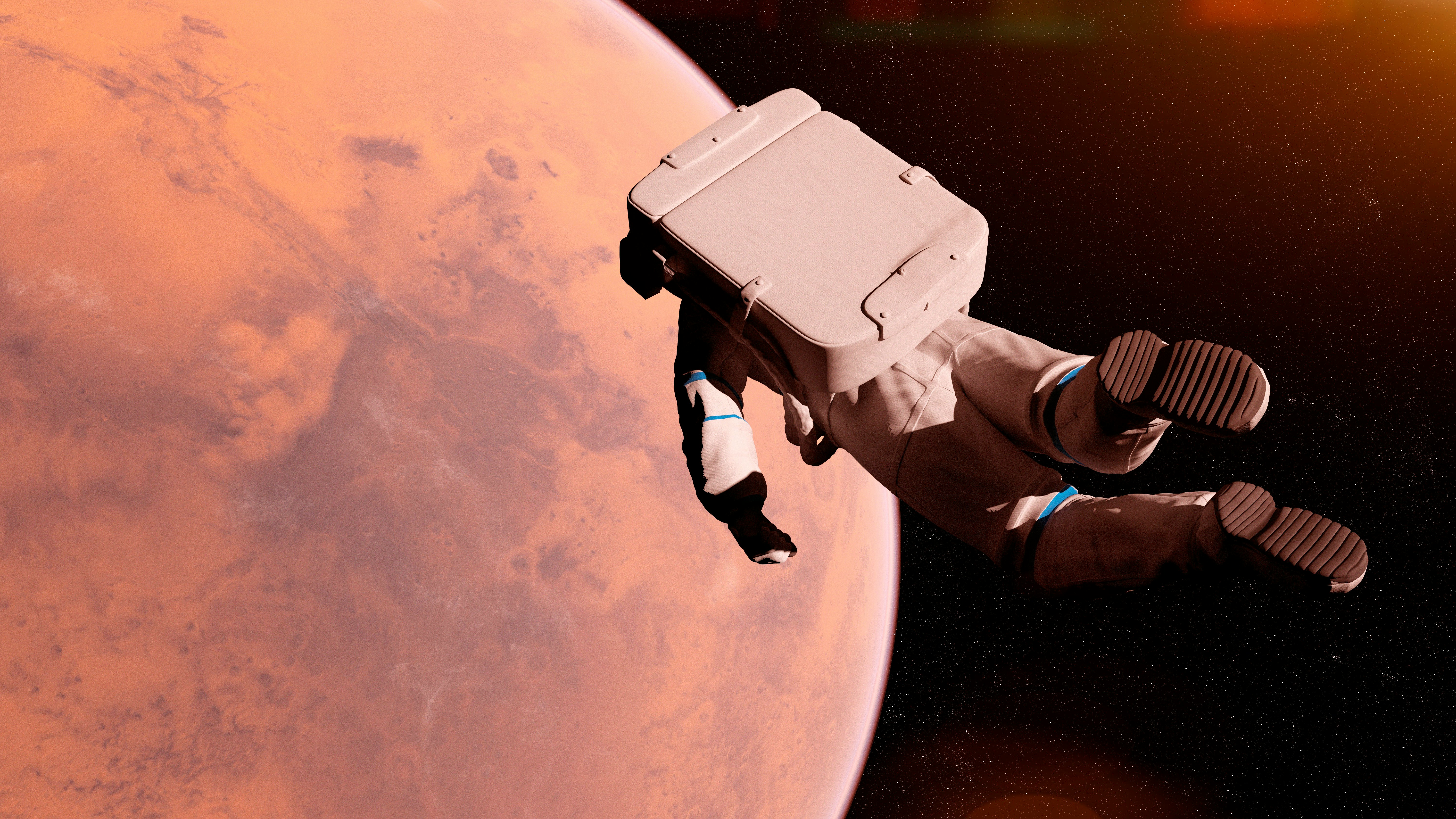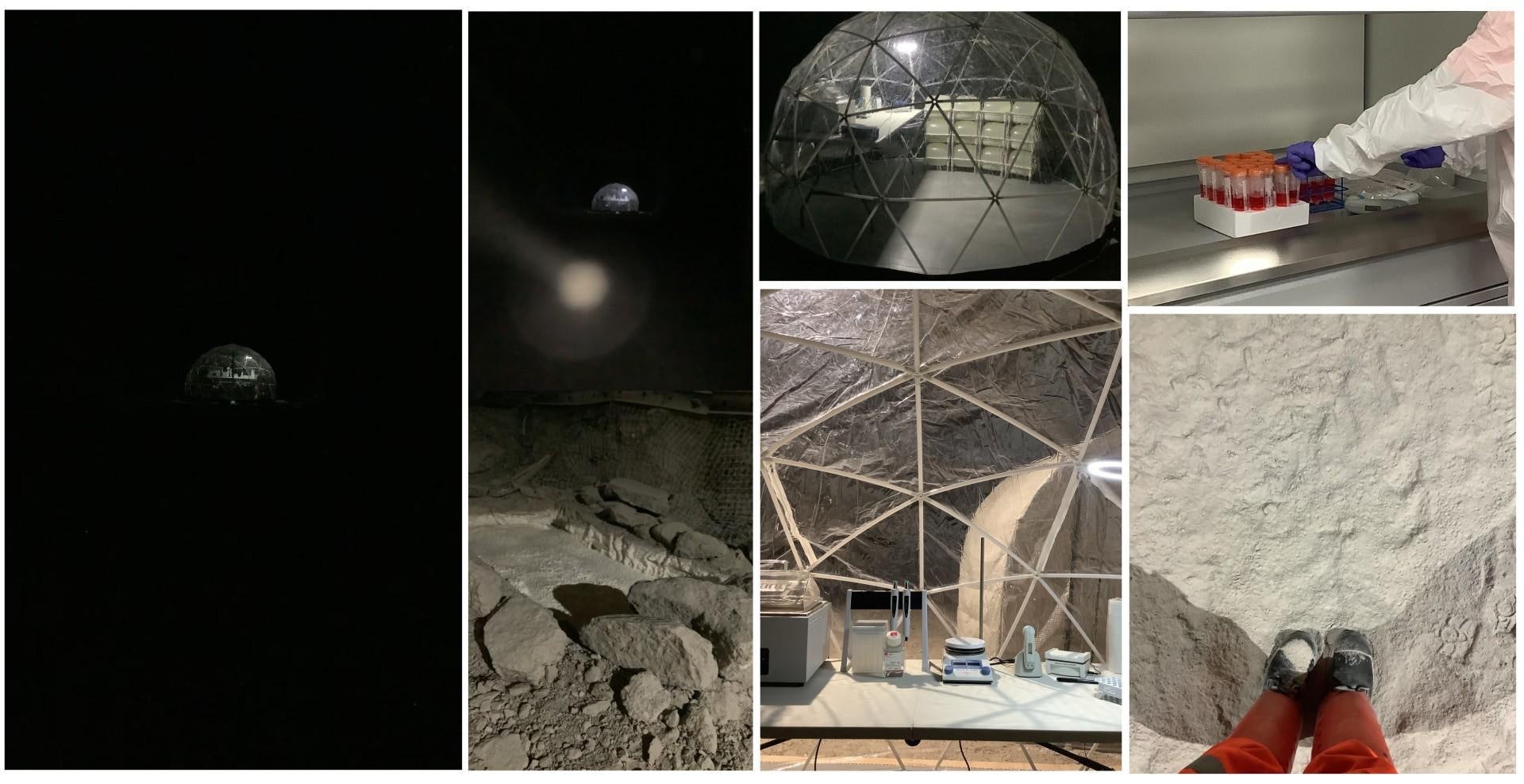
In the early days of spaceflight, just getting a satellite into Earth’s orbit was an accomplishment. In our era, landing rovers on other planets and bringing samples home from asteroids is the cutting edge. But the next frontier is rapidly approaching, when astronauts will stay for long periods of time on the Moon and hopefully Mars.
But before we can send people to those dangerous environments, the Artemis partner space agencies have to know how to keep them safe. An important part of that is simulating the conditions on the Moon and Mars.
Twelve astronauts walked on the Moon’s surface during the Apollo era. In the Apollo 7 mission, the first to land on the Moon, the astronauts only stayed on the surface for 2.5 hours. Surface time kept lengthening in subsequent missions, and during the last surface mission, Apollo 11, the crew clocked 22 EVA (Extravehicular Activity) hours.

Lunar-like labs
The lunar surface is a hazardous environment, and a 24-hour visit poses a significant risk. However, the Artemis Program has a different objective than Apollo. Landings will be short duration at first, but eventually, Artemis’ goal is to establish a longer-term presence, including humans and robots. And while the Moon is the first destination, Artemis is aimed at getting to Mars.
Any mission to Mars will be about three years long. It takes seven months to get there, then about 26 months for Mars and Earth to be close enough together for the return trip, then another seven months to get home. Planning for medical interventions during the seven-month visit is a critical piece of the mission. The medical interventions need to have some autonomous functions, and the goal has to be to get astronauts back to work.
Researchers from the UK’s University of Birmingham are working on the Bio-SPHERE (Biomedical Sub-surface Pod for Habitability and Extreme-environments Research in Expeditions) program in new laboratories being established around 0.7 miles underground in one of the UK’s deepest mines. Bio-SPHERE will eventually work on all kinds of threats and obstacles Artemis astronauts will face, including moving heavy equipment around underground and dealing with limited access to materials.
But Bio-SPHERE’s first lab will be focused on astronaut health, a cornerstone of a successful Artemis program. In a paper published in NPJ Microgravity, researchers described the design of an underground health facility to support astronauts. It’s a nearly 10-foot-wide simulation module designed to test biomedical procedures needed to prepare materials for treating tissue damage. These include complex fluids, polymers, and hydrogels for regenerative medicine that could be used in wound dressings or as fillers for damage mitigation.
There’s already a lab deep underground near the mine. It’s called the Boulby Underground Laboratory, and it’s been in use since the 1990s. Researchers investigate astrobiology and planetary exploration, Earth and environmental science, and particle physics at Boulby. So it’s a natural fit for the Bio-SPHERE program.
Bio-SPHERE’s lead researcher is Dr. Alexandra Iordachescu from the University of Birmingham’s School of Chemical Engineering. “We are excited to be partnering with the fantastic science team at the Boulby Underground Laboratory,” Iordachescu said in a press release. “This new capability will help to gather information that can advise on the life support systems, devices, and biomaterials which could be used in medical emergencies and tissue repair following damage in deep-space missions.”
One pronounced danger facing humans in long-duration spaceflight is reduced gravity. There’s no simple solution to that. While a barrier of some sort can protect astronauts from radiation, reduced gravity is a more persistent threat. And reduced gravity causes problems for the human body.
In their paper, the researchers point out the specific threat posed by reduced gravity. Specific parts of the body have evolved to support our weight, and in lower gravity, there’s less mechanical force on them. These parts include the hips, femoral head, and lower back vertebrae. As time goes on, lower gravity creates a loss in bone minerals like calcium and phosphate in these regions.
This leads to bone fragility, a problem for astronauts with important missions to fulfill. Not only could bone fragility create problems when it’s time to set up a Mars base on arrival, but it could also make it more difficult for the body during entry and landing. Not only that, but some research shows that extended exposure to radiation during spaceflight can also contribute to bone weakness. And the lost bone minerals don’t just disappear. They can end up in the kidney and cause kidney stones, requiring medical intervention.
Bone density loss and the ensuing hazards are just one of the perils astronauts face, and Bio-SPHERE is aimed at dealing with the fallout and getting astronauts back to work.
Professor Iorachescu highlighted the need for tissue repair and other treatments for medical emergencies on space journeys. In their paper, she and her colleagues write, “This is particularly important for clinical contexts such as tissue rupture and dislocation, bone fractures, skin burns, abrasion or lacerations, tendon/ligament tears, and blood loss.” While astronauts from the U.S. haven’t suffered any major trauma, there’ve been hundreds of musculoskeletal injuries, most involving hands.
But more serious injuries are inevitable, and the possibility can never be eliminated. In this case, regenerative technologies will be an important piece. Some research has already been conducted into these technologies onboard the ISS. These include stem cells, spheroids, organs on chips, and biomanufacturing or bioprinting.

For a mission to Mars to be successful, these technologies need further development, and that’s what’s at the heart of the first Bio-SPHERE laboratory.
Another factor, aside from long durations in space, drives these technologies: communication.
Real-time medical assistance from specialists on Earth is possible for astronauts on the Moon. The communication delay between Earth and the Moon is only a few seconds. Expertise is only a quick video chat away, and some necessary materials might only be as far away as a lunar orbit.
But Martian astronauts are isolated. The distance between Earth and Mars ranges from about 34 million to 124 million miles. The communication latency ranges from about five minutes to 20 minutes. That would make communicating with medical specialists in an emergency very difficult.
“Therefore,” the authors write, “an operational shift is required towards autonomous medical activities, a challenge which requires careful considerations to ensure an adequate medical infrastructure at these sites.”
On a crew of astronauts, there will be little redundancy. Losing a crew member to injury impairs the entire mission. This highlights the need for quick recovery, something the Bio-SPHERE designers are taking into account. “The need for a quick recovery of function means that some form of tissue replacement/analog would have to be developed on-site in useful time, implanted or applied to the injured site shortly after, or incubated (in the case of biological implants),” they write.
The overall goal of this research is to figure out more clearly what a habitat will look like. Along with providing the necessities of life and dealing with dangers like debris from meteor strikes, surface radiation, and dangerous dust, the habitat must be prepared to deal with medical emergencies, as well as minor issues that reduce a crew member’s workload.
The researchers envision a six-module habitat that could be employed on the Moon or on Mars to handle surgery and tissue repair. The modules are Recovery, Surgery/Telemedicine, Cell Banking, Materials Bioprocessing, and Tissue Engineering. The sixth module provides access, including an air-lock and sterilization chamber. It could be situated underground in a cave — since both Mars and the Moon have lava tubes and caves — or on the surface.
But we’re a long way from building a habitat like the one the researchers envision, and that’s why the BioSPHERE lab at the Boulby Mine is so important. Alongside the Boulby Underground Lab, Iordachescu and her colleagues can begin working on some of these technologies and gathering data that can help prepare them for use.
“These types of metrics can guide system design and help to assess the scientific needs and acceptable timeframes in bioengineering operations under the constraints of isolated environments, such as space habitats,” Iordachescu said. “The data is likely to bring numerous benefits for Earth-based applications as well, such as delivering biomedical interventions in remote areas or in hazardous environments and, more generally, understanding biomedical workflows in these non-ideal environments.”
In the near term, traditional medical technologies like methods of tissue reconstruction will likely be used in Artemis and other endeavors. But with research like this getting more focus, things will change.
“With further development of tissue engineering and 3D fabrication technologies over the following years, more complex, personalized tissues and ultimately organ-like structures could be generated in an isolated environment,” the authors write. “Over the next years, it will be essential to generate further predictions on these matters, which will ultimately dictate the design of these space settlements and the technology required to support these,” Iordachescu and her colleagues conclude.
Dr. Professor Sean Paling, director and senior scientist at the Boulby Underground Laboratory, where Iordachescu and her team will build the lab, is enthused about the project.
“We are very pleased to be working with Dr. Iordachescu and the team from the University of Birmingham on this exciting work,” Paling said. “The challenges ahead for humankind in exploring habitats beyond Earth are clearly many and significant. The Bio-SPHERE project promises to help answer some key logistical questions in establishing sustainable living conditions in remote, subterranean environments and, in doing so, will significantly contribute to the essential preparations for our collective long, difficult, and exciting journey ahead. It is also a great example of the diverse range of scientific studies that can be carried out in a deep underground science facility, and we are very happy to be hosting it.”
This article was originally published on Universe Today by Evan Gough. Read the original article here.







